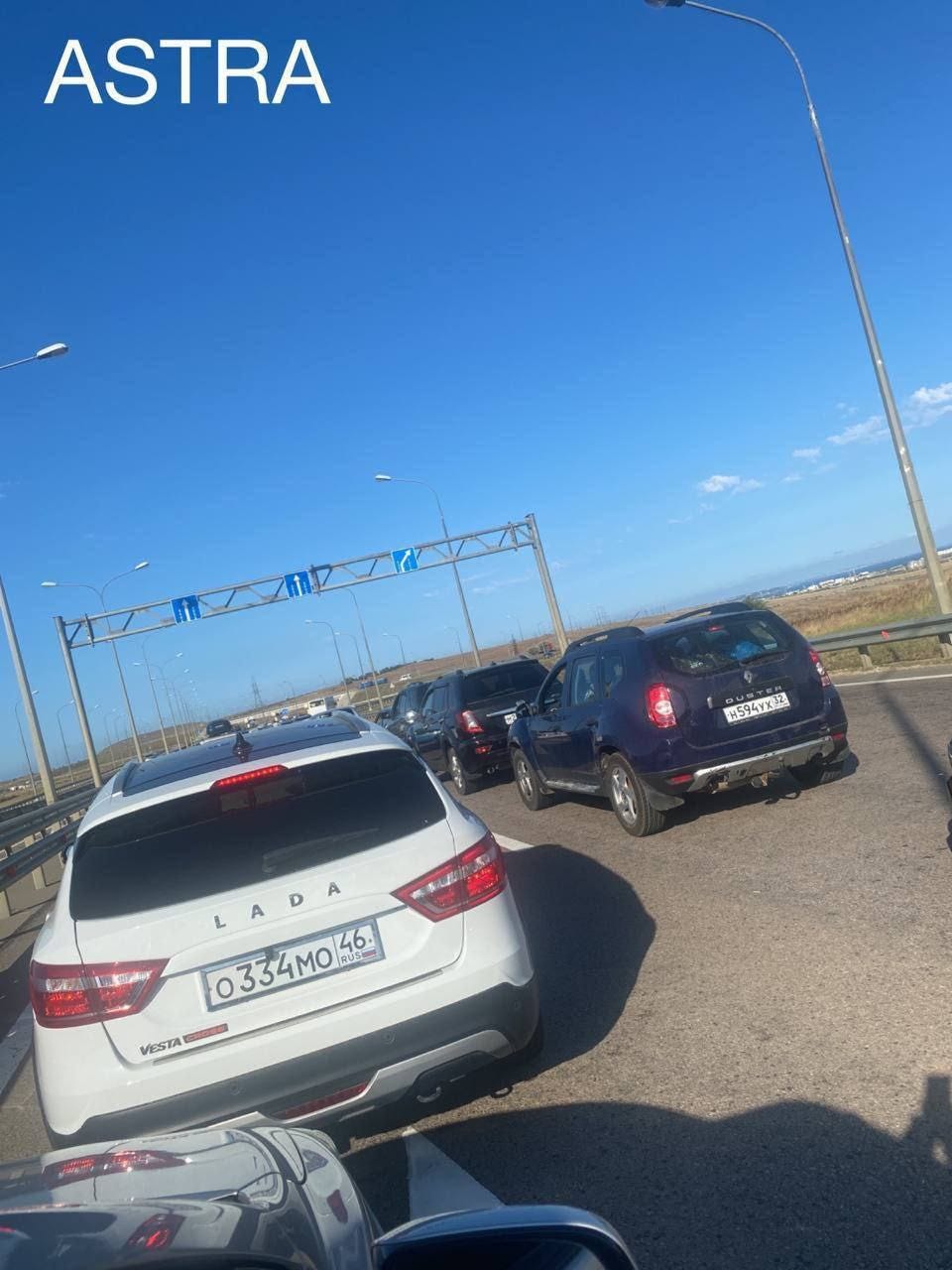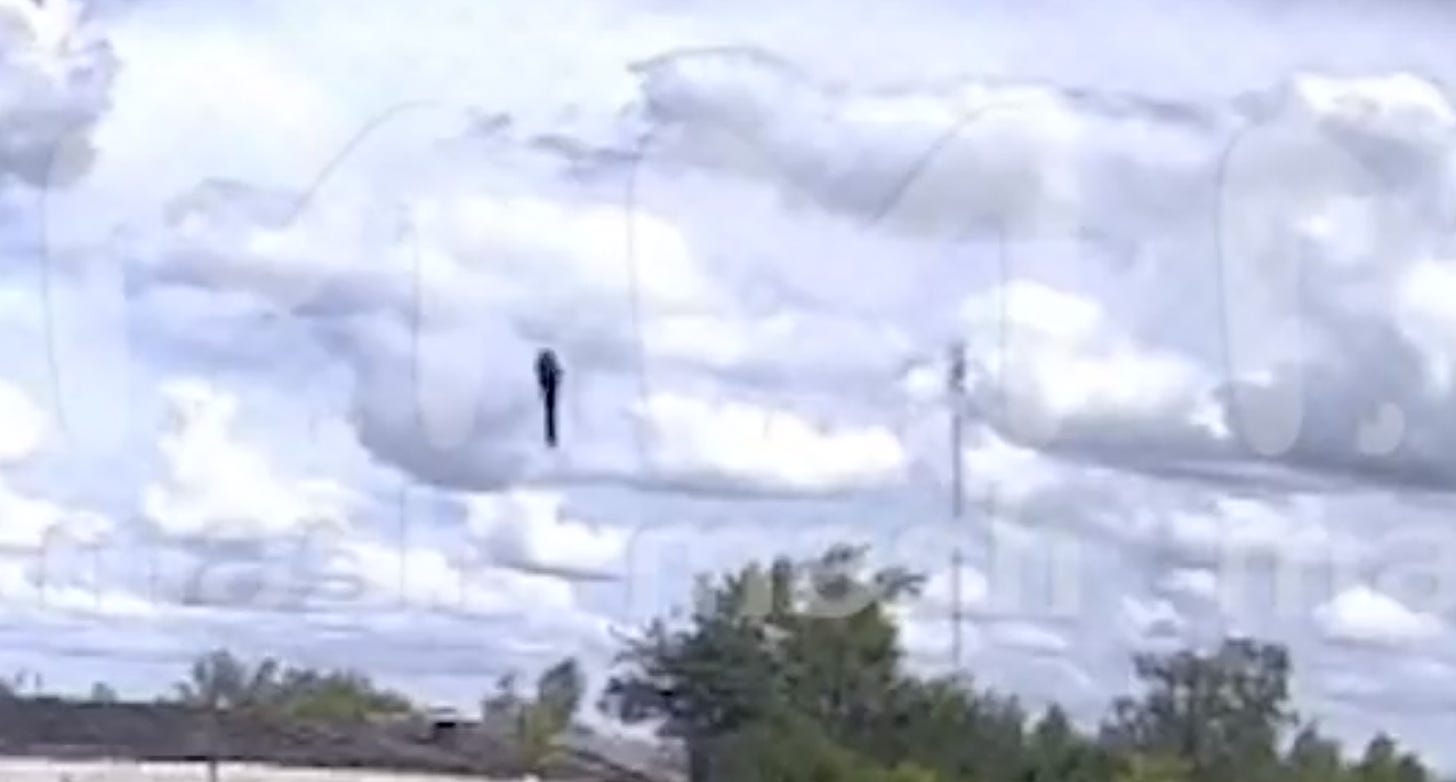A brief analysis by military expert Tom Cooper.
Gauging by reports in the mainstream- and the social media: there was a strike on the bridge. Unclear are weapons used and the outcome.
AFAIK, official Kyiv didn’t comment. The Russian governor Sergey Aksenov reported the downing of two incoming missiles, while the Russian PRBS-industrialists reported the deployment of ’20 Mugin-5 PRO’ drones from the Shkolny airfield near Odesa, and two S-200s. At least the last two were claimed as shot down by S-400 SAMs of the 31st Air Defence Division, VKS.
The Keystone Cops in Moscow reported the deployment of a single ‘S-200’ missile, but stressed this didn’t cause any damage. Then they changed the version to ‘two S-200s’ or which ‘one hit but caused no damage’. Reports in the social media are indicating one contrail in the sky and another traffic jam on approaches to it – though it’s unclear how long this might have lasted:


Actually, S-200 is an old surface-to-air weapons system (NATO called it the ‘SA-5 Gammon’): it was developed in the USSR of the 1960s and, depending on the version, it could reach targets up to 300km away. Ukrainians should know it well because back in October 2001, during joint Ukrainian-Russian military exercises, one of such missiles was used – by accident - to shot down a Tupolev Tu-154 airliner of the Siberia Airlines, killing 66 passengers and 12 crewmembers, over the central Black Sea). (Officially at least, Ukraine did not assume responsibility, but paid compensations to relatives of victims, while Russia declared it for ‘impossible’ the jet was felled by a SAM.)
The S-200 was withdrawn from service in the PSU, back in 2013. However, since around 9 July, there have been several reports indicating Ukrainian strikes with V.860 or V.880 missiles of the S-200 system, fired ‘in ballistic mode’. How, and what is the precision of such weapons, remains unknown.


Most - if not all - of smoke sighted over/along the Kerch Bridge yesterday was emited by multiple smoke generators installed by the Russians. Seems, they’re using these in attempt of disturbing IR-seeker heads of Storm Shadow and/or SCALP-EG missiles deployed by the PSU, though.

While there are reports about the road bridge being back in function, as of yesterday evening, as of this morning, there are no reports the railway bridge was back to operations.
As for why would a strike on this bridge be important….considering in the last 10 days Ukraine has knocked out four other bridges further north (Armiansk-, Chongar-, and Henichevsk Bridges), connecting the occupied Crimea with the mainland?
It’s impossible to overemphasise the importance of - for exemple - Ukraine knocking out the Kerch Railway Bridge.
That’s so because,
a) the VSRF is certainly working very hard on repairing these four bridges;
b) indeed, has already positioned pontoon bridges near road bridges in some of cases (of course, pontoon bridges can’t be used by trains); and
c) by knocking out this one bridge - foremost: its railway component - the ZSU/PSU would render all the four bridges further north entirely useless.
Keep in mind: the Russian armed forces are overdependent on delivery of their supplies, and movement of their troops and reinforcements with help of the railways.
This text is published with the author's permission. First published here